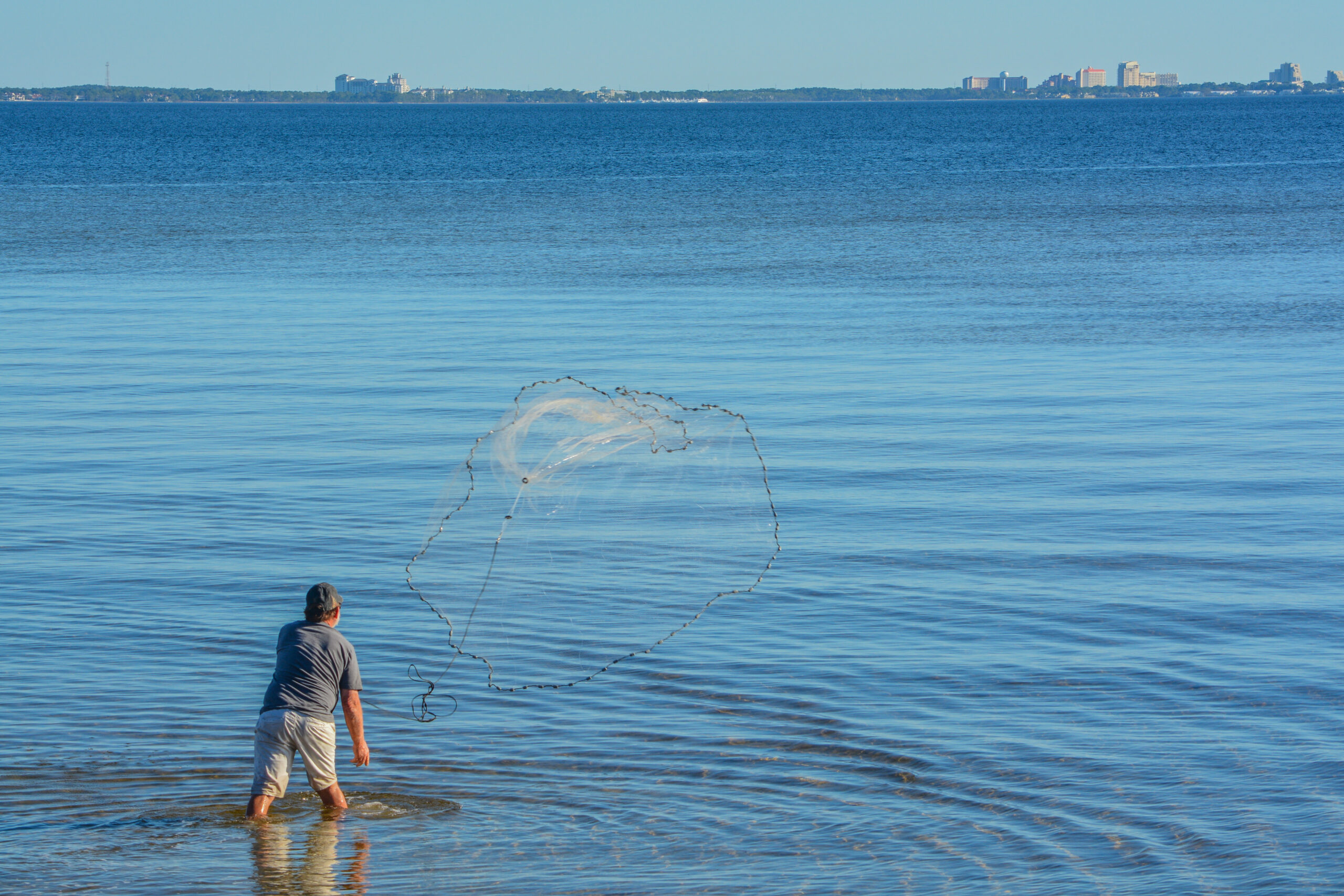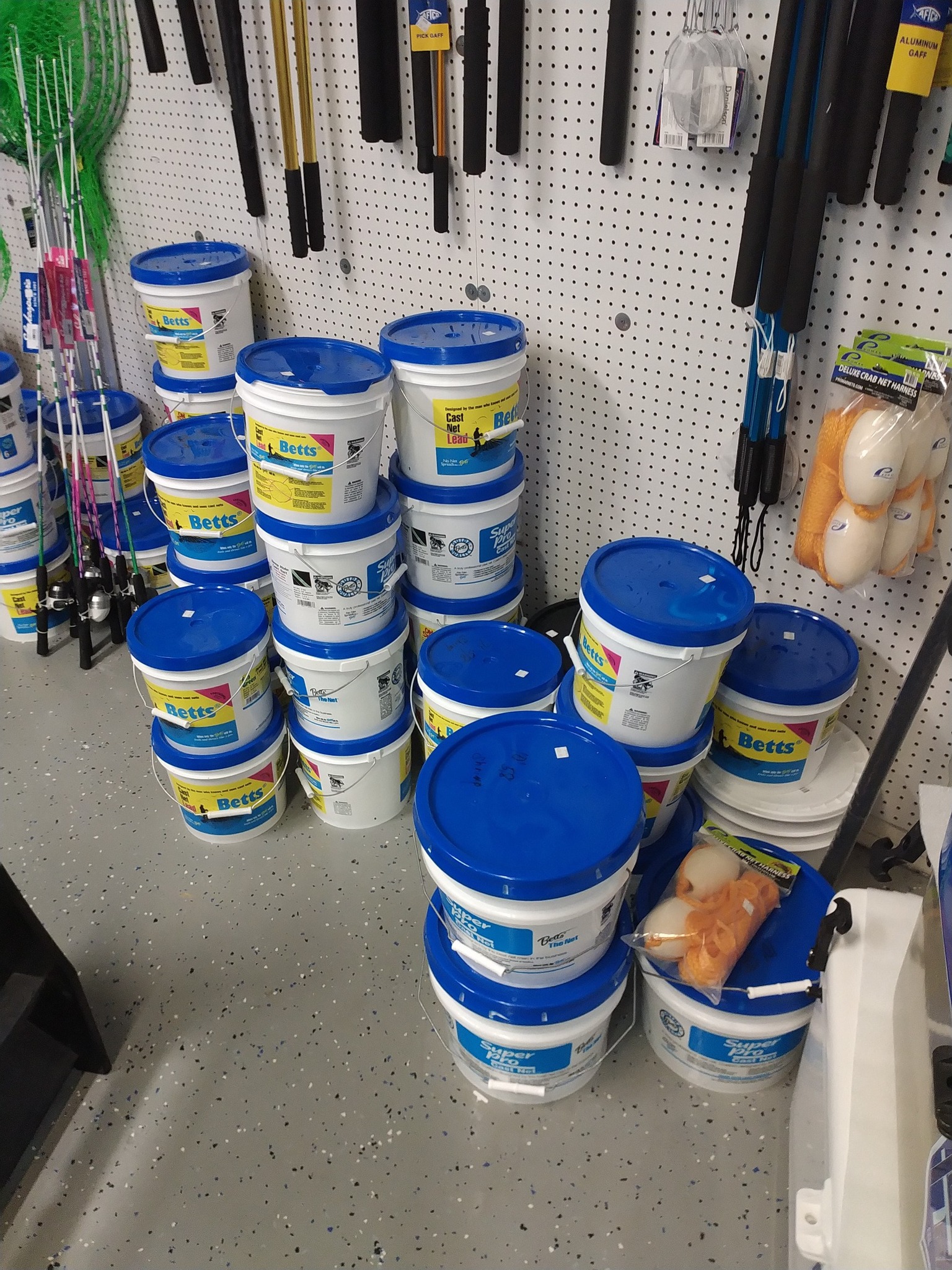Last Updated on August 8, 2025 by Eric Bonneman

Shrimping along the northeast Florida coast is a tradition that goes back generations. St. Augustine, with its mix of tidal creeks, salt marshes, and nearshore waters, offers some of the most accessible shrimping opportunities in the state. Whether you are a local looking to fill a cooler or a visitor wanting to experience a hands-on way to gather fresh seafood, learning how to use a shrimp net properly is the first step toward success.
Understanding What a Shrimp Net Is
A shrimp net is designed specifically to catch shrimp while minimizing harm to other marine life. There are several different types, but the most common styles you will encounter in St. Augustine are:
- Cast Nets – Circular nets with weighted edges that are thrown by hand to cover an area before being pulled in.
- Baited Lift Nets – Square or round frames with fine mesh, lowered into the water with bait to attract shrimp before being lifted back up.
- Dip Nets – Handheld nets used in shallow waters, often in combination with a light at night to spot shrimp.
Each type has its advantages, and the one you choose will depend on where you are shrimping and your preferred method.
Why Shrimp Nets Are Popular in St. Augustine
St. Augustine is situated along the Intracoastal Waterway and has access to both estuarine habitats and nearshore ocean waters. Shrimp thrive in these areas because of the mix of salty ocean water and nutrient-rich freshwater from rivers and creeks. Seasonal migrations bring shrimp into accessible waters at predictable times of year, creating opportunities for net fishermen to harvest them in abundance.
Local waters such as the Matanzas River, Salt Run, and the inlets leading to the Atlantic Ocean are known for producing good catches during peak runs. Shrimping here is both a practical way to gather food and a cultural activity enjoyed by families and friends.
Choosing the Right Type of Shrimp Net
Selecting the right shrimp net is more than just picking the one that looks best on the shelf. The decision should be based on water depth, shrimp behavior, and your own experience level.
Cast Nets for Active Searching
Cast nets are versatile and allow you to cover large areas quickly. In St. Augustine’s tidal creeks and shallow estuaries, they are ideal for targeting shrimp moving with the tide. A smaller mesh size, often around 3/8-inch, helps ensure that shrimp are caught without slipping through. Weight distribution along the perimeter helps the net sink quickly, increasing your catch rate.
Baited Lift Nets for Stationary Fishing
Lift nets are perfect for shrimping from docks, bridges, or seawalls. By placing bait such as fish scraps or commercial shrimp bait inside the net, you can let the scent draw shrimp in before hauling it up. This method requires patience but is especially good for beginners or those shrimping in deeper water without a boat.
Dip Nets for Night Shrimping
Using a dip net in combination with a bright underwater light is one of the most exciting shrimping methods. At night, shrimp are attracted to light, making it possible to scoop them up as they swim nearby. This method is common in the summer and early fall when shrimp are moving in shallow areas.
Where to Use a Shrimp Net in St. Augustine
The beauty of shrimping in St. Augustine is that you have access to multiple productive spots, whether you are on foot, in a small boat, or fishing from a dock.
- Vilano Causeway and Bridge – Popular for lift net shrimping at night during peak season.
- Salt Run – Known for clear water and easy access for both cast netting and dip netting.
- Matanzas River – Offers multiple locations where tidal flow concentrates shrimp.
- Local Docks and Piers – Many public docks in the area allow shrimping with nets, especially during the summer run.
When using any public structure, check local regulations to ensure shrimping is allowed, and always respect other fishermen.
The Best Times of Year to Shrimp in St. Augustine
Shrimping in this region is highly seasonal. In general, the late spring through early fall months offer the most action, with peak activity varying depending on weather patterns, tides, and water temperature. The two main runs you will hear locals talk about are:
- Summer Brown Shrimp Run – Usually from June through August, with shrimp moving in from offshore waters.
- Fall White Shrimp Run – Often occurring in September and October, offering larger shrimp and heavier catches.
Timing your trips around tidal movement is also critical. Shrimp are most active during moving tides, particularly on outgoing tides when they are flushed from backwaters into main channels.

How to Use a Cast Net for Shrimping
Using a cast net effectively takes practice, but once you get the hang of it, it can be one of the most productive shrimping methods.
- Prepare Your Net – Untangle any knots and ensure the weights hang freely.
- Load the Net for Throwing – Hold the yoke or horn in your non-dominant hand, gather the netting in loops, and load part of the lead line over your shoulder or arm.
- Choose Your Spot – Look for signs of shrimp movement such as ripples or small jumps at the surface.
- Throw the Net – Use a smooth, circular motion to spread the net evenly over the water.
- Retrieve Quickly – Pull the hand line steadily to close the net and bring it back before shrimp can escape.
Using a Baited Lift Net
Lift nets require less physical effort and can be used for extended periods while you wait for shrimp to gather.
- Bait the Net – Use fish heads, cut bait, or commercial shrimp bait placed in a mesh bag in the center of the net.
- Lower to the Bottom – Let the net settle in a spot with good tidal flow.
- Wait – Give the shrimp time to enter the net, usually 5 to 10 minutes.
- Lift Smoothly – Pull the net up quickly and steadily to trap the shrimp inside.
Dip Netting at Night
Night shrimping with a dip net can be fast-paced and exciting.
- Set Up Lights – Use a strong submersible light or a surface-mounted LED to attract shrimp.
- Watch for Movement – Look for shrimp swimming toward the light beam.
- Scoop Quickly – Position your dip net ahead of the shrimp’s path and lift smoothly.
- Keep Moving – Walk along the shoreline or around the dock to find new groups of shrimp.
Handling and Storing Your Catch
Shrimp are delicate and spoil quickly without proper handling. Keep your catch in a cooler with plenty of ice, ensuring they are drained so they do not sit in meltwater. Once home, rinse them in cold water, then either cook immediately or freeze them in a sealed bag with a small amount of water to maintain quality.
Regulations and Conservation
Before heading out, check Florida’s current shrimping regulations. These can include:
- Bag limits
- Size restrictions
- Seasonal closures
- Gear restrictions in certain areas
Observing these rules helps sustain healthy shrimp populations and keeps the fishery open for future generations.
Safety Considerations
Shrimping often takes place at night or in low-light conditions, so safety should be a priority.
- Wear a life jacket when shrimping from a boat.
- Use proper lighting to stay visible to other vessels.
- Be cautious on slippery docks or seawalls.
- Keep a first aid kit handy for handling hooks, knives, or bait.
Enjoying the Rewards of Shrimping in St. Augustine
Shrimping in St. Augustine delivers fresh seafood and a chance to take part in a time-honored coastal activity. The mix of tidal creeks, inlets, and open water creates a variety of conditions for using cast nets, baited lift nets, or dip nets, each offering a unique way to target shrimp. By matching your net type to the location and season, paying attention to tide movement, and keeping your catch fresh, you set yourself up for both a productive and enjoyable outing.
The experience goes beyond filling a cooler. It is a way to spend time outdoors, learn a hands-on skill, and share the tradition with friends or family. From the docks along the Vilano Causeway to the flowing waters of the Matanzas River, St. Augustine’s shrimping spots offer something for everyone willing to put in the effort. With the right preparation and a bit of persistence, you can head home with fresh shrimp and the satisfaction of catching them yourself.
If you are looking for gear, advice, or answers to your fishing questions, visit us at Avid Angler in St. Augustine. You can check us out in person for everything from shrimp nets to live or frozen bait, as well as rods, reels, and much more to make your next trip a success.
